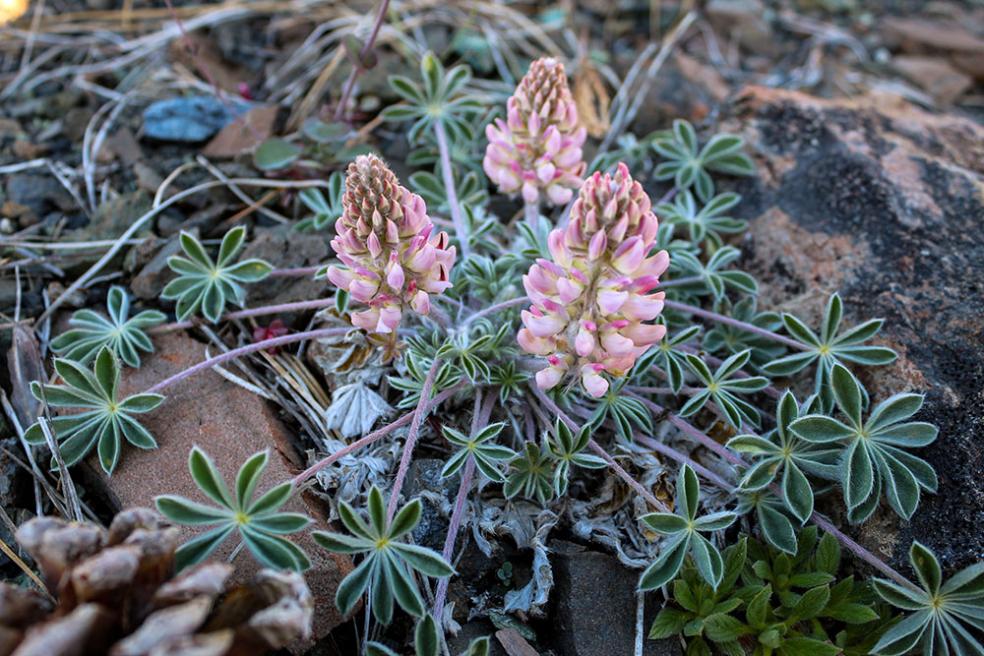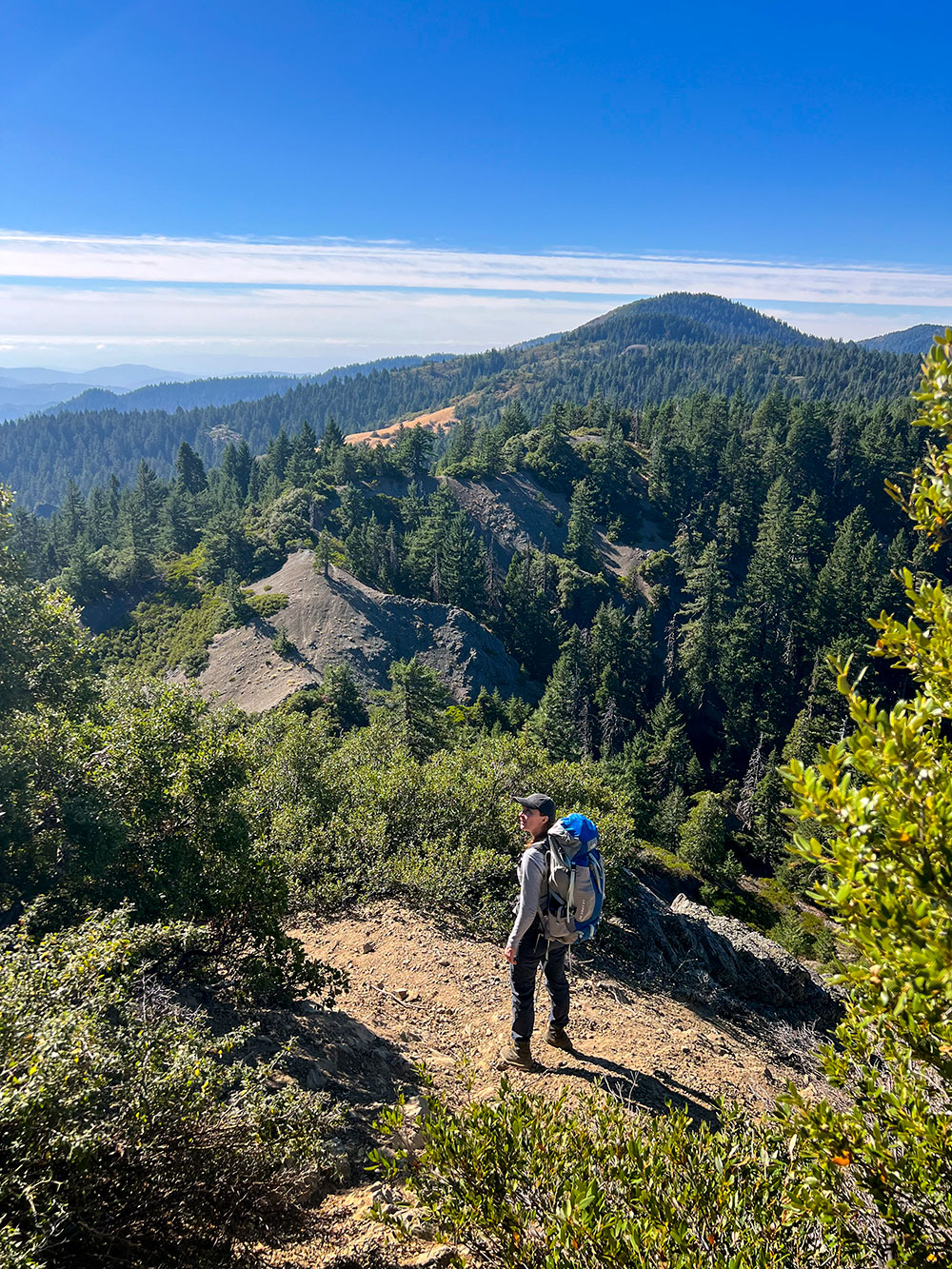
The Lassics lupine is a wildflower that occurs in just one place in the world—in the Lassics Wilderness of the Six Rivers National Forest. It is small but charismatic, growing to just 15 centimeters tall with pink and white flowers, and fuzzy leaves.
It faces several threats to its survival including herbivory, encroachment and competition from other vegetation, and especially climate change, says Caitlyn Allchin, the Biological Sciences graduate student who is helping to recover the species. As a result, the species recently received protection under the Endangered Species Act in September 2023.
Without human intervention, the plant would be driven to extinction, according to previous Cal Poly Humboldt research that was also supported by USFWS, USFS, and CNPS. Current conservation efforts include placing cages around the plants to protect them and their seeds against predators such as mice. But factors including drought, wildfire, and reduced soil moisture continue to threaten the lupine.
Since 2021, Allchin has focused on finding an alternative location for the wildflower where there is less herbivory and encroachment, and optimal soil moisture. If successful, it would improve the species’ viability.

To identify a potential new site for the species, she is assessing landscapes throughout Humboldt and Trinity Counties, and has produced habitat suitability models using data about the climate, the soil, bedrock materials, and more. She has placed climatic sensors at multiple locations, assessed aerial imagery, and conducted plant surveys to compare each site with the Lassics lupine’s current habitat.
Allchin has so far identified four potential relocation sites. She has placed sensors at each site and collected data over the course of one year to capture changes in soil moisture, soil temperature, and insolation (the quantity of solar radiation energy) at these locations.

Her research is not only critical for the plant’s survival but also for regional biomes. By understanding how to conserve the Lassics lupine, scientists can find the right tools to improve ecosystem resilience and conserve biodiversity in California and beyond, she explains.
“The lupine, like other sensitive species, is part of a fragile ecosystem that is already stressed due to the impacts of climate change,” she says. “Climate change is negatively impacting endemic plant species all over the world.”
“Finding ways to ameliorate this issue through methods such as assisted migration can provide the framework for other species of conservation concern or plant communities as climate change impacts worsen over time.”